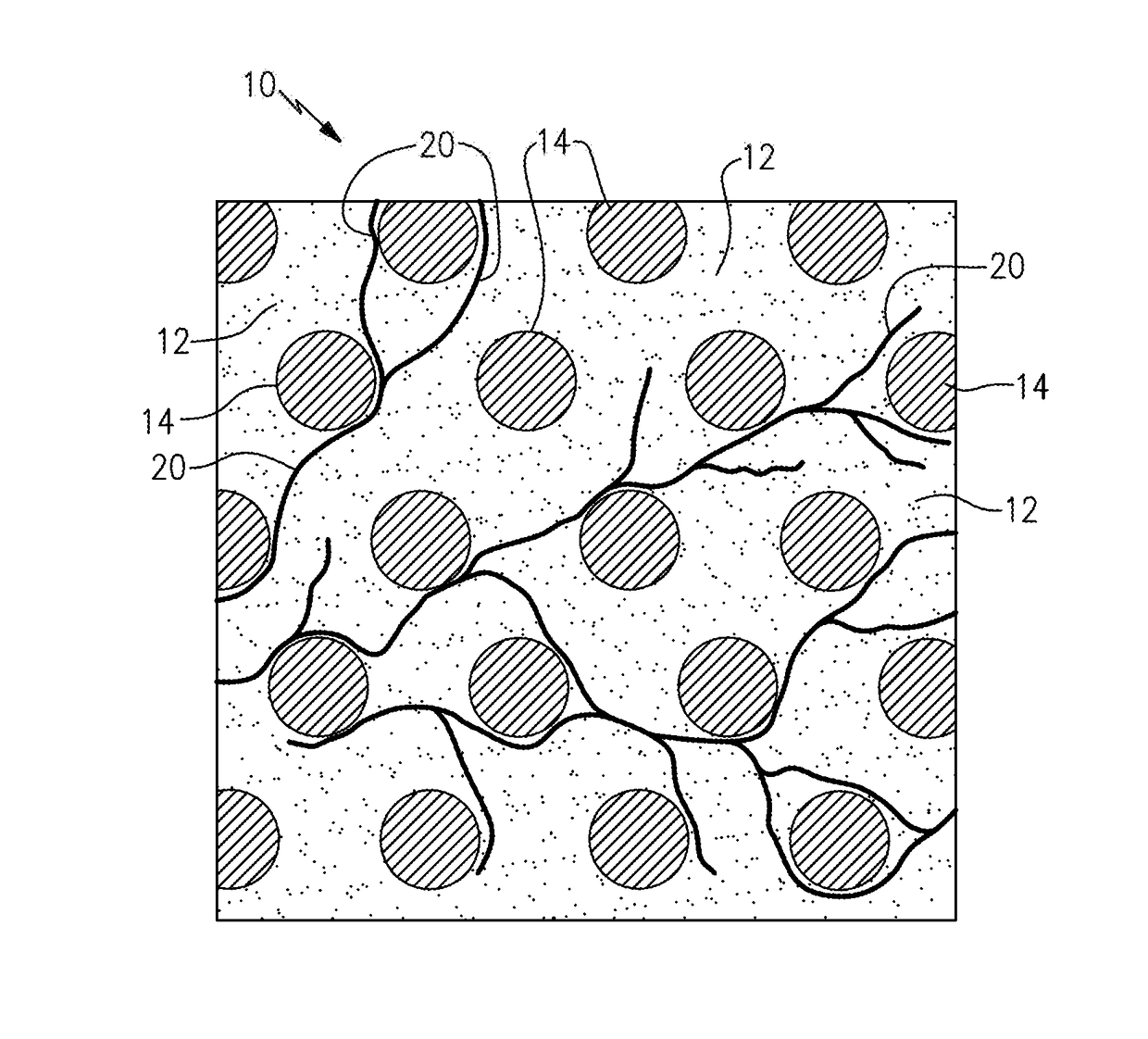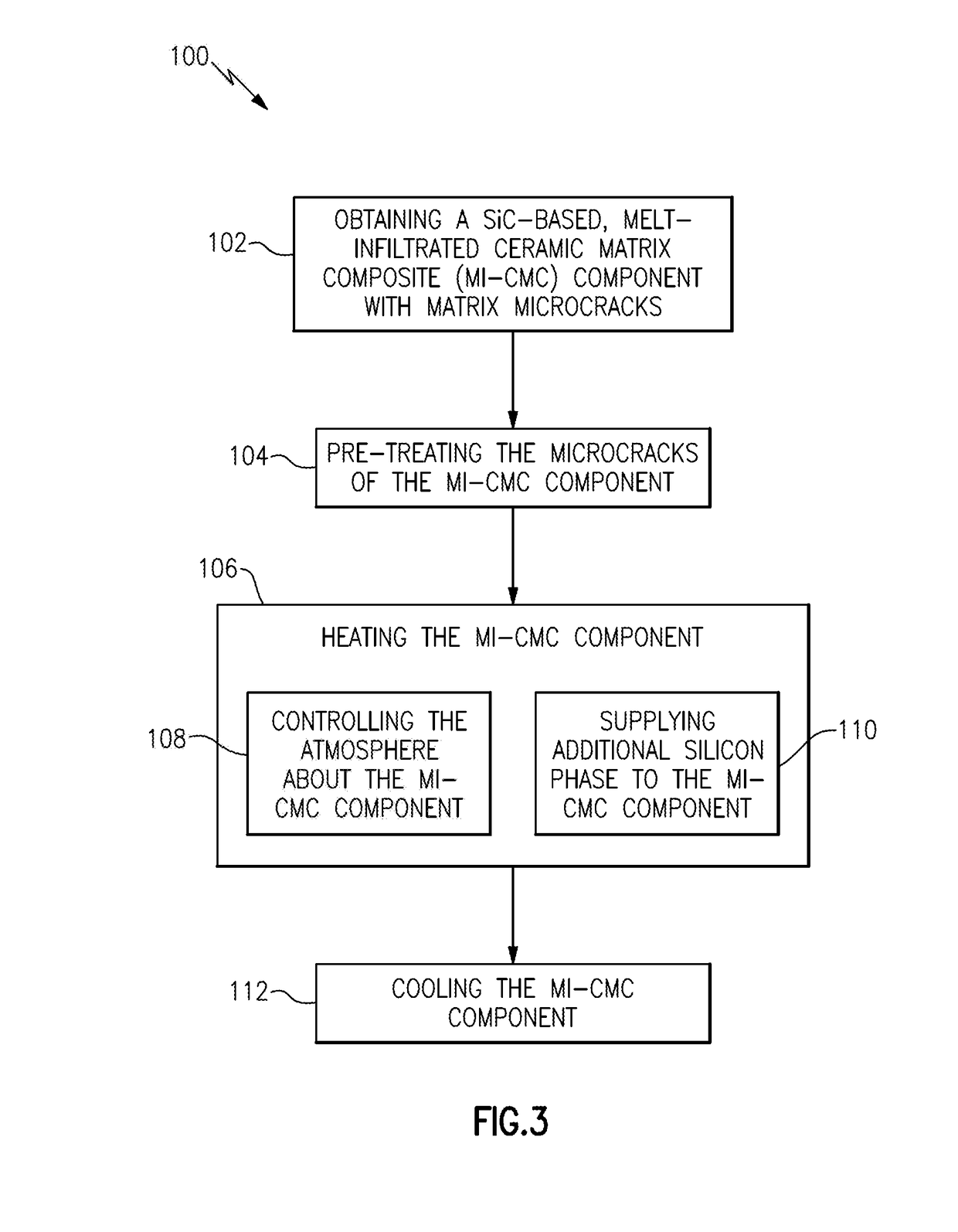Methods of repairing matrix cracks in melt infiltrated ceramic matrix composites
a technology of ceramic matrix and composites, which is applied in the direction of mechanical equipment, machines/engines, transportation and packaging, etc., can solve the problems of matrix cracks that are often subjected to loads above the matrix cracking stress, found their way into high temperature structural applications, and relatively expensive problems
- Summary
- Abstract
- Description
- Claims
- Application Information
AI Technical Summary
Benefits of technology
Problems solved by technology
Method used
Image
Examples
example 1
[0026]Two panels of pre-impregnated MI-CMC, measuring about 6 in by 6 in by 0.08 in, were tested. The material of the panels is available under the trade name of HiPerComp™. The panels were cut into about 6 in long by 0.5 in wide MI-CMC bars. As-fabricated HiPerComp™ CMC is known to include residual stress in the matrix portion thereof that affects the measurement of the proportional limit stress of the material. To relieve such residual stress, six of the bars were annealed by either (a) heating them in air at about 2400° F. (about 1315° C.) for about 100 hours, (b) by reheating them for about 20 minutes above the melting point of silicon therein under a vacuum, or by using both treatments (a) and (b). The heat treated MI-CMC bars were then tested to failure at room temperature via a tensile test (using procedures as outlined in ASTM C1275) and the PL, E and ultimate strength of each heat treated MI-CMC bar were determined. The PL was determined using the 0.005% strain offset metho...
example 2
[0030]A panel of pre-impregnated MI-CMC material reinforced with coated Hi-Nicalon fiber was manufactured according to the procedures described in U.S. Patent Application No. 2007 / 0099527 and U.S. Pat. No. 6,024,898. Test MI-CMC bars were cut from this panel and subjected to the same testing procedures as described above with respect to EXAMPLE 1. Three MI-CMC bars were tensile strength tested in the annealed condition, one MI-CMC bar was tensile strength tested in the cracked condition, and two MI-CMC bars were tensile strength tested in the repaired condition as described above with respect to EXAMPLE 1. The results of the tensile strength testing of the annealed, cracked and repaired MI-CMC bars are listed in Table 2 below.
[0031]
TABLE 2Tensile Strength Test Results fromthe Test MI-CMC Bars from EXAMPLE 2Condition ofAverage ProportionalAverage InitialAverage UltimateSampleLimit Stress (ksi)Modulus (Msi)Strength (ksi)Annealed21.140.030.5Cracked12.529.931.8Repaired19.940.633.3
[0032]...
PUM
| Property | Measurement | Unit |
|---|---|---|
| temperature | aaaaa | aaaaa |
| width | aaaaa | aaaaa |
| temperature | aaaaa | aaaaa |
Abstract
Description
Claims
Application Information
 Login to View More
Login to View More - R&D
- Intellectual Property
- Life Sciences
- Materials
- Tech Scout
- Unparalleled Data Quality
- Higher Quality Content
- 60% Fewer Hallucinations
Browse by: Latest US Patents, China's latest patents, Technical Efficacy Thesaurus, Application Domain, Technology Topic, Popular Technical Reports.
© 2025 PatSnap. All rights reserved.Legal|Privacy policy|Modern Slavery Act Transparency Statement|Sitemap|About US| Contact US: help@patsnap.com



